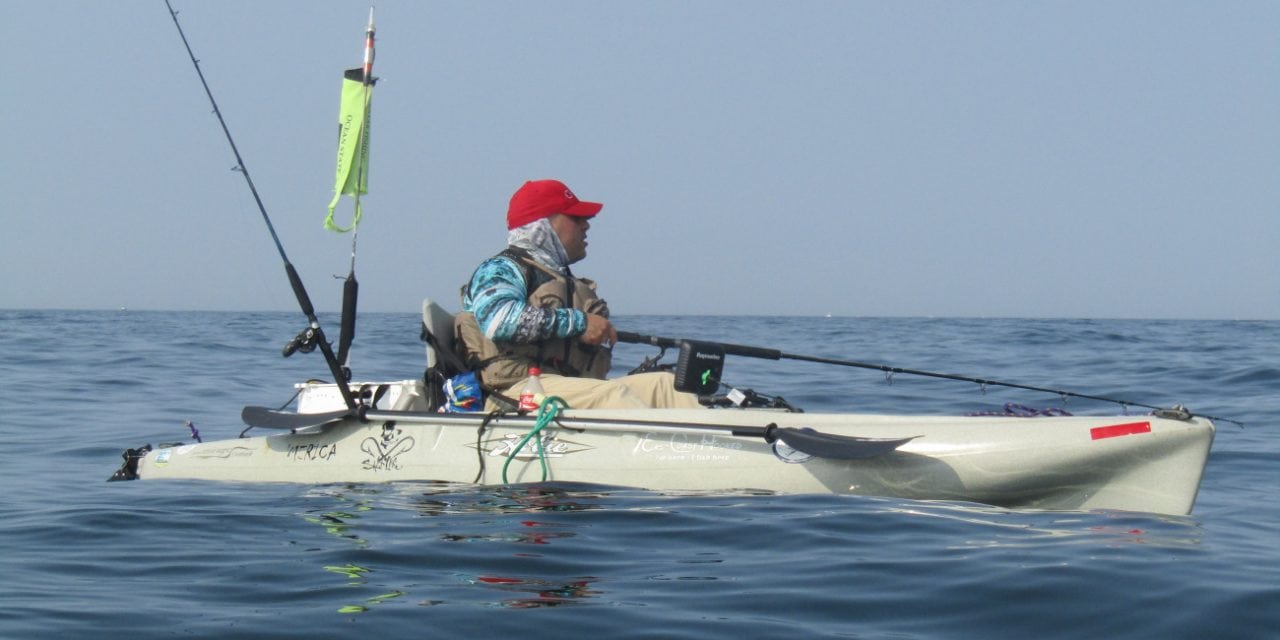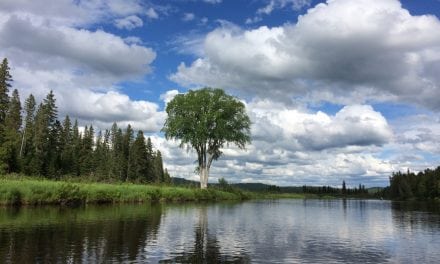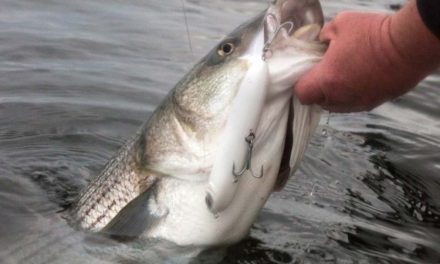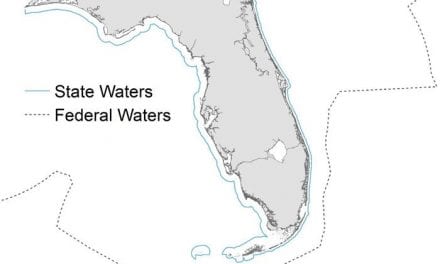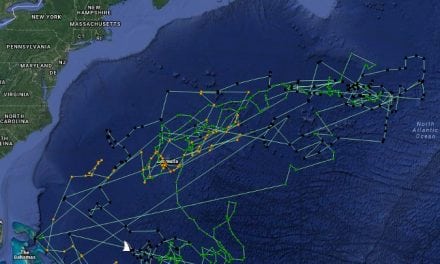Brian Hall is a pretty supportive guy.
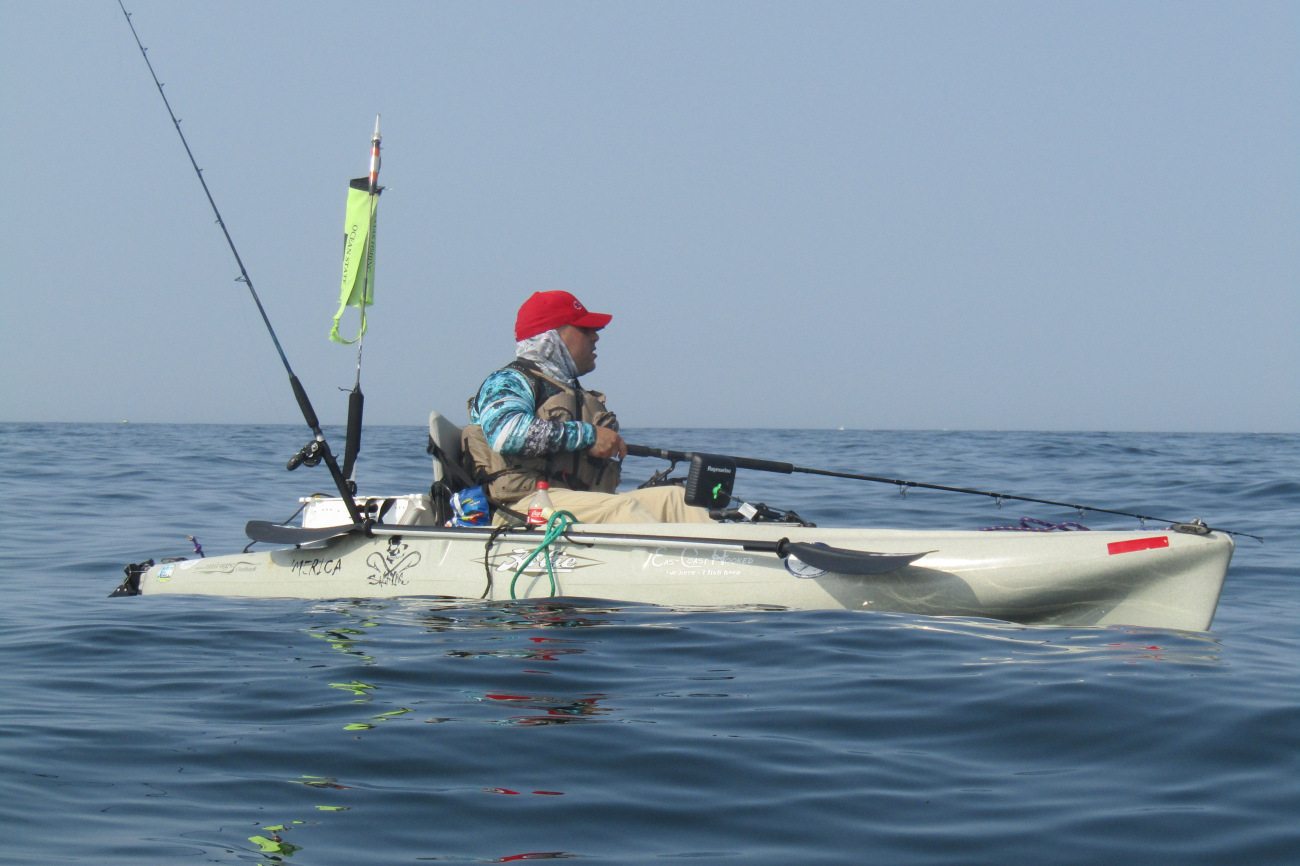
Brain Hall, searching for the sound of stripers, south of Block Island
He’s a veteran, a fireman, a husband, a relentless kayak fisherman and a rock solid friend who calls some lucky people, “brother.” Brian’s had some intel on schools of early morning albies and called in fishing partner Tom Adams. The two launched kayaks at dawn, understanding that albies would be moving south soon so every day on the water was precious. Some situations call for fishing solo but more often, being on the water with a friend is the best experience. Tom’s another guy who lives outdoors with a big, natural smile to prove it.
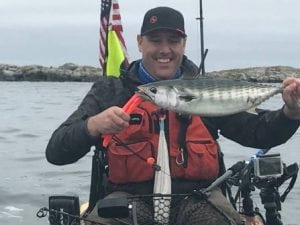
Tom Adams, an albie and a very big smile
Long before some ragged European settlers came ashore just up the coastline, unloaded a hold full of empty beer casks then realized they didn’t know much about growing dinner in bony glacial till, the real locals understood the importance of munnawhatteaug for their survival. Menhaden, along with the occasional lobster, were placed against corn plants to fertilize the earth. Munnawhatteaug, “that which manures.”
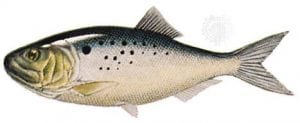
Technically false albacore or albies, are Brevoortia tyrannus.
We call them pogies, bunker, mossbunker or fat-back’s but monikers are irrelevant, it’s their undeniable significance to a larger ecosystem that matters most. Filter feeding cousins of herring, shad and sardines, they graze on phytoplankton for the first year or so then zooplankton after that. An adult pogie can filter algae from seven gallons of seawater a day, which keeps bays clean and healthy. Recreational fishermen snag them for bait, commercial guys target massive schools in Narragansett Bay so thick they cut off sunlight to lower reaches, pair trawlers take them in unfathomable amounts for reduction fisheries so we can have tasty cat food and shiny lipstick. Menhaden are crucial forage fishes, protein-rich elements of a food web supporting ospreys and eagles, striped bass, bluefish, sharks, whales and false albacore.
Brian and Tom paddled for a few hours with tide moving them around as the elusive albies remained just that. False albacore are tough and fast, making them such a prize to catch and photograph. The flash of tins like local favorites Point Jude Lures call them as do Deadly Dicks and Hogy Lures Epoxy Jigs in pinks and yellows. After a few hours they made a switch to the w

est because the best fishermen access a situation and make changes.
The Atlantic States Marine Fisheries Council is considering changing how they evaluate menhaden populations and how much we can take without collapsing it, like we did in 1880. We have quotas and allocations, TAC’s, incidental bycatches and reams of regulations but what we haven’t had is a real understanding of menhaden existing in a broad ecological landscape. We’re damned good at that taking part but the wheels sure can slow when it’s time for deciding how much to leave for everyone else.
The Council is crafting Amendment Three with two benchmarks: fecundity and mortality. Fecundity is the amount of young eg
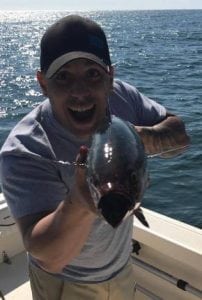
Brian with a catch, grin and release
gs or fish which will help sustain the population. An adult can produce approximately 300,000 eggs per year. Fish mortality is the amount of fish removed from the fishery by methods including predation, fishing and natural mortality. Menhaden are used primarily for bait to catch other fish and lobsters and for the reduction industry which by attrition, is largely based in Virginia and enjoys approximately 85% of the quota.
Look up Omega Protein sometime then sift through the barrister baloney and marketing shine before purchasing your fish oil supplement or kitty food.
There are several plans with options and sub options for you to consider, all of which will impact how the fishery is managed. You can read about their next meeting at: http://www.asmfc.org/files/Meetings/AtlMenhadenBoardNov2017/AtlMenhadenBoardNov2017MeetingNotice_TA.pdf or watch a webinar of the Menhaden Management Board at https://register.gotowebinar.com/register/5185069623952037379
The public hearing process is not cumbersome; your thoughts don’t slow the process, they feed it.

How could you not trust Brian, even with a, ummm, sunbrella, on his head?
Tom hauled in those awesome false albacore because he had support from Brian, who showed him the spot, made a critical change in direction and paddled all around to get the best pictures of his friend grinning with that gorgeous fish.
This is your chance to support a species which cleans our waters, feeds so many and brings the most fantastic smiles to faces like Tom’s.That albie was feeding on munnawhatteaug because that’s how a healthy, balanced ecosystem works. Take away the friend or the forage fish and you have an empty day on the water.
I’d say that’s far more important than a shine on our lips.
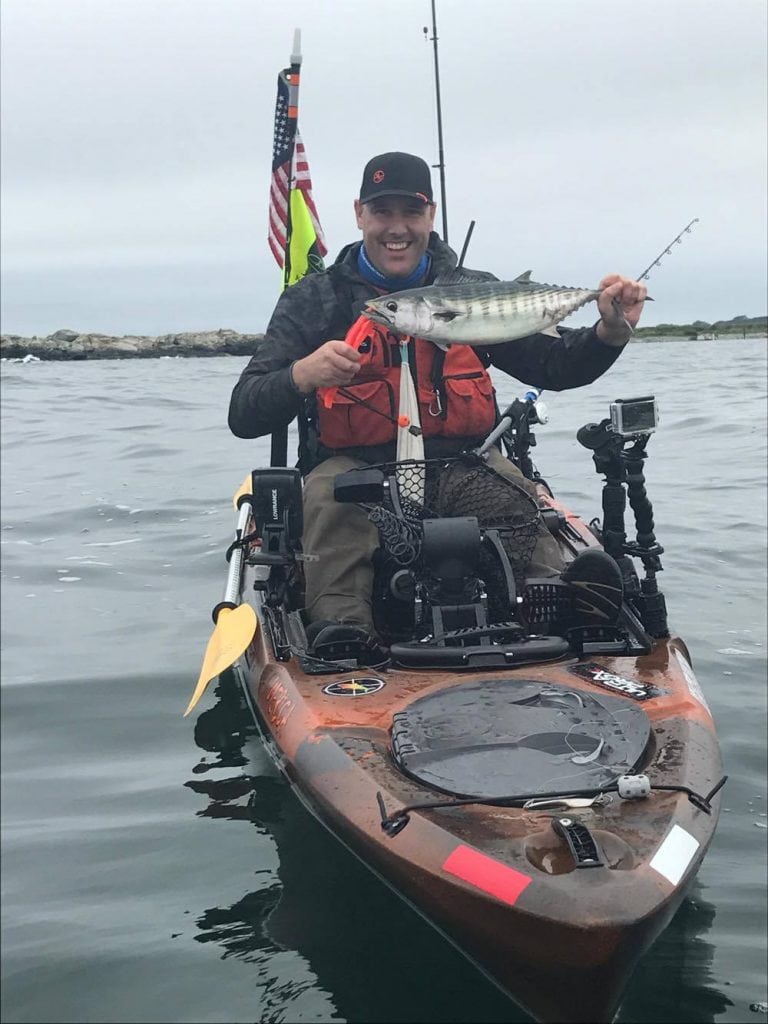
Isn’t this what it’s all about? Fishing and conservation.

